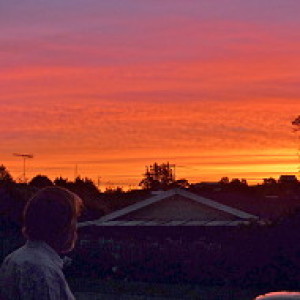Gorse in flower
This plant is alien to New Zealand's climate and therefore grows and spreads without restraint. I am posting this at the end of our week in New Zealand, a Sunday.
Gorse was the reason my father's farm-owning life ended. It is a noxious weed in New Zealand, and he was required to remove it and lacked the resources to even attempt to do so.
Thanks to wikipedia I give you here some info about gorse in NZ
Gorse (Ulex europaeus) is a major invasive plant species in New Zealand and millions of dollars are spent on its control.
Gorse is one of the most widely recognised agricultural weeds in New Zealand. It covers 700,000 hectares (1,700,000 acres) at varying densities — a total of 5% of the land area of New Zealand when excluding existing indigenous forest, vegetated sub-alpine and alpine areas.[1]
Introduced from Western Europe in the very early stages of European settlement, it was recorded by Charles Darwin during his voyage through New Zealand waters in 1835 as growing in hedges in the Bay of Islands.[2] Its spread and development as a weed in New Zealand's temperate climate was rapid, but settlers failed to recognise the threat; gorse seed continued to be imported and plantings deliberately established into the 1900s. The seed can lie dormant on the ground for up to 50 years, germinating quickly after the adults have been removed. Unfortunately, most methods of removing adult gorse plants, such as burning or bulldozing them, create the ideal conditions for the gorse seeds to germinate.
Large spreading infestations over hundreds of hectares resulted, peaking in the late 1940s. Gorse became New Zealand's most costly weed to control and total eradication with current technology seems impossible.
Gorse has been found to form a useful nursery for many species for native bush regeneration. When young, gorse bushes are very dense. As they grow older, they become 'leggy', and provide the ideal conditions for native seeds to germinate and grow. The native seedlings grow up through the gorse, cutting out its light and eventually replacing it. This technique is working successfully and within a short time frame at Hinewai Reserve on Banks Peninsula.
Gorse has been used for hedges and windbreaks on the Canterbury Plains since the 1850s. These windbreaks have a combined length of 300,000 kilometres.
The fact that bulldozing the gorse fosters its regrowth gives me a little perverse pleasure. The wealthy gentleman farmer who bought my father's farm, when he could no longer meet the repayments AND fight the gorse, used a bulldozer. No wonder it all came back worse and spread so much more. Dad knew better than to try burning it off.
This evening as an early treat for S whose birthday is a few days away yet, she, the two daughters and the two grandboys (Auckland ones) and I went to Stomp. Just back and I must now get my toastie for a late meal.

Comments
Sign in or get an account to comment.


